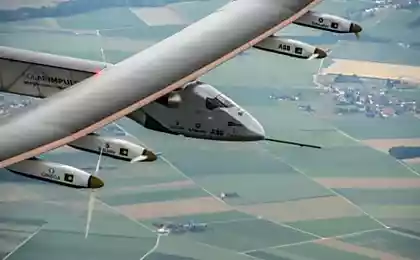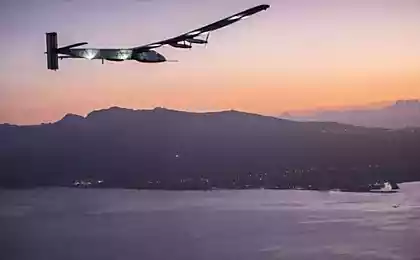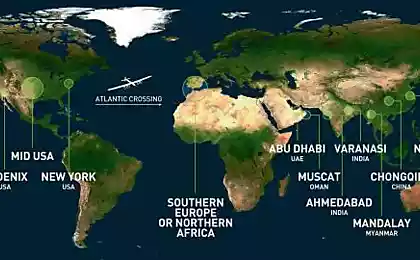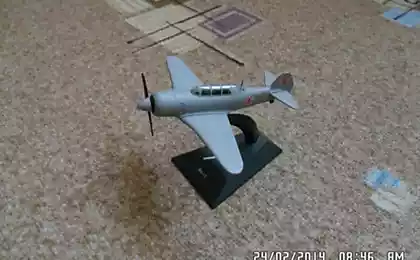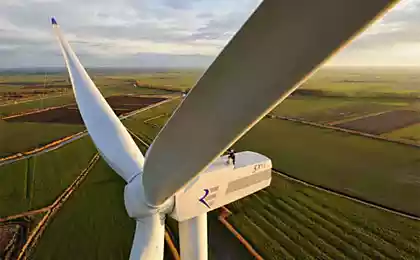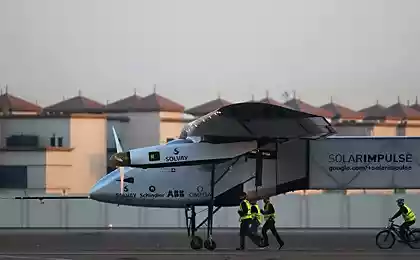443
Solar Impulse 2 again breaks records!
Last night, Solar Impulse 2 has crossed the Pacific ocean and ended their round-the-world flight. According to representatives of the solar plane with its founder, Bertrand Piccard (Bertrand Piccard) landed on 23 April at 11:44 PM (Pacific Daylight Time) at the Federal airfield Moffett in mountain view, California, after a flight, which was 62 hours and 29 minutes from the airport, Kalaeloa, Hawaii.
The plane took off from Kalaeloa April 21 at 6:15 am. Just one person on-Board a solar-powered aircraft could reach a maximum height of 28,000 ft (8 634 m) and the average speed of 40.4 mph (65.4 km / h), flying a distance of 2,810 miles (4523 km).
During the day the power to the motors was provided by solar panels on the surface of the wings, while the special batteries helped him to stay in the air at night.
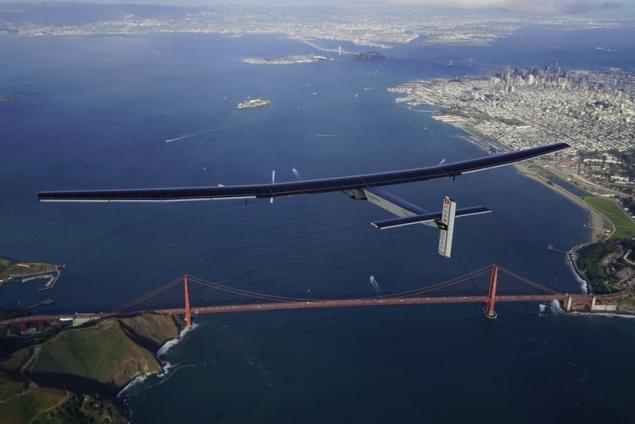
Solar Impulse 2 has set several records while flying over the Pacific ocean, including the record for the distance, speed, duration, altitude, and climb for electric aircraft. However, these achievements still require confirmation of the Federal office of civil aviation USA.
During the flight, April 22, Picard spoke with UN Secretary General ban Ki-moon via cockpit video about the importance of developing solar energy technologies as part of signing the Paris agreement on climate change.
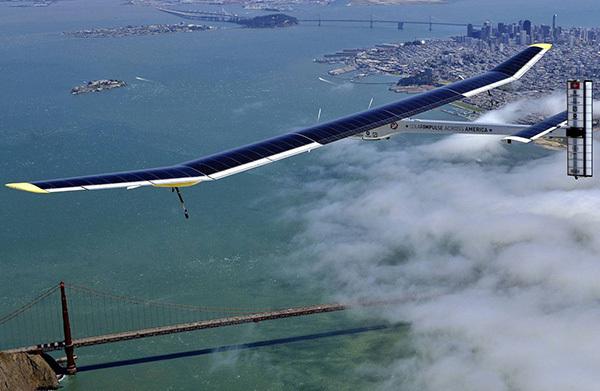
Yesterday's landing was the final part of the ninth stage of the world tour of the solar plane Solar Impulse 2. The next destination is new York, then Europe or North Africa, after a stop in Abu Dhabi, which became the starting point for Solar Impulse 2 in March 2015.
Solar Impulse 2 is stuck in Hawaii due to the damage caused to the power system during the five-day flight from Japan to Oahu. Because of extreme isolation, the batteries that feed the Solar Impulse 2, overheat at night. After landing, ground crew found that the battery was badly damaged and repairs will take weeks, which meant a significant delay in plans.
"Solar Impulse shows that to date, the study does not concern the conquest of new territories, even because the moon is conquered, it's about learning new ways to improve the quality of life on Earth," says Picard. "It's more than just the plane: it is the concentration of environmentally sound technologies, true flying laboratory, as well as illustration of the fact that there are now solutions to meet major challenges facing our society." published
P. S. And remember, only by changing their consumption — together we change the world! ©
Join us in Facebook , Vkontakte, Odnoklassniki
Source: facepla.net/the-news/tech-news-mnu/5452-%D1%80%D0%B5%D0%BA%D0%BE%D1%80%D0%B4-%D1%81%D0%BE%D0%BB%D0%BD%D0%B5%D1%87%D0%BD%D0%BE%D0%B3%D0%BE-%D1%81%D0%B0%D0%BC%D0%BE%D0%BB%D0%B5%D1%82%D0%B0.html
The plane took off from Kalaeloa April 21 at 6:15 am. Just one person on-Board a solar-powered aircraft could reach a maximum height of 28,000 ft (8 634 m) and the average speed of 40.4 mph (65.4 km / h), flying a distance of 2,810 miles (4523 km).
During the day the power to the motors was provided by solar panels on the surface of the wings, while the special batteries helped him to stay in the air at night.

Solar Impulse 2 has set several records while flying over the Pacific ocean, including the record for the distance, speed, duration, altitude, and climb for electric aircraft. However, these achievements still require confirmation of the Federal office of civil aviation USA.
During the flight, April 22, Picard spoke with UN Secretary General ban Ki-moon via cockpit video about the importance of developing solar energy technologies as part of signing the Paris agreement on climate change.

Yesterday's landing was the final part of the ninth stage of the world tour of the solar plane Solar Impulse 2. The next destination is new York, then Europe or North Africa, after a stop in Abu Dhabi, which became the starting point for Solar Impulse 2 in March 2015.
Solar Impulse 2 is stuck in Hawaii due to the damage caused to the power system during the five-day flight from Japan to Oahu. Because of extreme isolation, the batteries that feed the Solar Impulse 2, overheat at night. After landing, ground crew found that the battery was badly damaged and repairs will take weeks, which meant a significant delay in plans.
"Solar Impulse shows that to date, the study does not concern the conquest of new territories, even because the moon is conquered, it's about learning new ways to improve the quality of life on Earth," says Picard. "It's more than just the plane: it is the concentration of environmentally sound technologies, true flying laboratory, as well as illustration of the fact that there are now solutions to meet major challenges facing our society." published
P. S. And remember, only by changing their consumption — together we change the world! ©
Join us in Facebook , Vkontakte, Odnoklassniki
Source: facepla.net/the-news/tech-news-mnu/5452-%D1%80%D0%B5%D0%BA%D0%BE%D1%80%D0%B4-%D1%81%D0%BE%D0%BB%D0%BD%D0%B5%D1%87%D0%BD%D0%BE%D0%B3%D0%BE-%D1%81%D0%B0%D0%BC%D0%BE%D0%BB%D0%B5%D1%82%D0%B0.html








